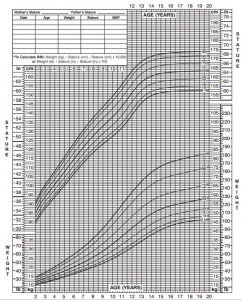Children are a blessing to a family. As babies, they bring a family together. Those moments of sharing the smile of a newborn, holding a soft, pudgy hand and looking into the angel face of someone that is part of family that you created. As parents, we know we have a large responsibility to take care of this little person. We have to feed, clothe, comfort, and teach, mentor, model and most importantly love this child. You want to do your best to give your child every opportunity to be who God has destined them to be. One way we do this is by taking care of them physically.
Obesity Statistics for children
Obesity in children and teens is becoming a national health problem. According to the American Academy of Child and Adolescent Psychiatry 16-33% of children and adolescents are obese. 13 Million US children are obese. During the past 40 years, obesity rates on children 6-11 has nearly tripled. Overweight children become overweight adults. Studies indicate that if a 10-13 year old child is obese, he/she will have an 80% chance of becoming an obese adult. Gaining weight due to poor diet and exercise causes 300,000 deaths each year and costs the healthcare system $100 billion dollars each year. Some estimates are as high as $150 billion.
Healthy Parents-Healthy Kids
If one parent is obese there is a 50% chance that their children will also be obese. If both parents are obese that chance climbs to 80%. Don’t blame “medical problems”. Only 1% of obesity is caused by physical problems. A child may be obese due to these factors:
Bad eating habits
- Overeating
- lack of exercise
- family history
- medical or mediations
- stressful events or life changes
- family or peer problems
- low self esteem
- depress or emotional issues
Obesity. Is it your child?
A few extra pounds does not an obese child make. Your child’s weight must be 10% higher than is recommended for their height and weight. Most physicians’ offices use a percentiles chart from the Center for Disease Control to evaluate children for this physical assessment. (There is also a chart for boys) An indicator of obesity for adults is BMI (Body Mass Index). A BMI of 30% is an indicator of obesity. According to a 2012 map from the National Conference of State Legislatures, the states where childhood obesity rates are the highest are: Tennessee, South Carolina, Mississippi, Louisiana and the District of Colombia with 20.1% or more of the children rate as obese. The states with the lowest incidence of childhood obesity are Oregon and New Jersey with 5-10%. Missouri and Kansas have 10-15% of their children who fall into the obese category. In 2003 the percentage of children in Missouri who were obese was 17.3 percent in 2012 the rate fell to 14.9%.
Obesity poses more health risks
Obesity can also cause other physical medical conditions and increase the risk and likelihood for:
- Type 2 diabetes (a disease usually diagnosed in adults over 40)
- High blood pressure
- Heart disease
- Asthma
- Sleep apnea
In one large study, 61% of overweight 5-10 year olds already had at least one risk factor for heart disease and 26% had 2 or more risk factors. As an overweight adolescent and adult, obesity –related chronic diseases such as heart disease (1st) some instances of cancer (2nd) stroke (3rd) and type 2 diabetes (7th) are the leading causes of death in the U.S.
What can you do to stop obesity in your family?
Get Your own Weight Down
If you are an overweight parent, make it a priority to get your own weight down. Bringing your own weight under control will decrease the chances that your own child or children will be overweight. Eat better, eat less, and begin an exercise regimen. Get the guidance (from a doctor, a nutritionist, and a personal trainer) that you need to maximize your efforts.
Pick a sport
 According to the National Survey of Children’s Health, nearly 30% of all children do not exercise 3 or more times per week. Get your kids involved in one or more physical activities. Not all kids like to do sports. If you have a child does not like “sports” try a dance class. Dance classes offer the exercise that young bodies need as well as other life skills such as discipline, performance skills, self control, cooperation, concentration, memorization, and responsibility. With many different forms (such as ballet, jazz, and hip hop), dance offers a child many of opportunities to exercise and move and build their muscles.
According to the National Survey of Children’s Health, nearly 30% of all children do not exercise 3 or more times per week. Get your kids involved in one or more physical activities. Not all kids like to do sports. If you have a child does not like “sports” try a dance class. Dance classes offer the exercise that young bodies need as well as other life skills such as discipline, performance skills, self control, cooperation, concentration, memorization, and responsibility. With many different forms (such as ballet, jazz, and hip hop), dance offers a child many of opportunities to exercise and move and build their muscles.
As a parent, we want the best for our kids. It is hard to believe that taking care of yourself first, could actually be the best thing for your kids! Make your kids pick a sport or have them try one or several dance forms. Don’t quit trying different activities until you found something they like to do and do 2-3 times a week. As they get older, this behavior will follow them into adulthood. Give them the best chance at a healthy, disease-free, medication-dependent life. Get them eating better and exercising now. When you accomplish this, you may avoid obesity and give them a better life!


